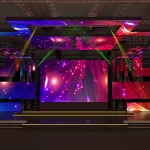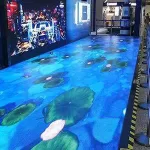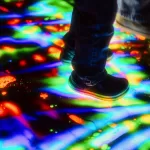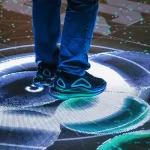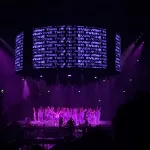Redefining Museum Engagement Through Interactive LED Floor Displays
Museums are no longer static spaces. Instead, they are transforming into immersive, tech-driven learning environments. A key player in this shift is the interactive LED floor display. These innovative solutions are reshaping how visitors interact with art, history, and culture. D-King, a leading LED display supplier, empowers curators with customizable floor panels that deliver dynamic, real-time content.
In this article, we explore why more museums are adopting this technology, top use cases, technical considerations, and content strategies. Our goal is to guide curators and buyers in harnessing the power of interactive LED floor displays for their exhibits.
1. Why Museums Are Investing in Interactive LED Floors
The digital transformation of museum spaces reflects a broader trend in experiential learning. Studies show that interactive exhibits increase visitor engagement by 72%. They also drive social media sharing by 58%, especially when the exhibit includes visual elements like digital floors.
Benefits include:
Enhanced accessibility for children and elderly visitors
Support for real-time exhibit rotation
Creation of multi-sensory learning experiences
One standout example is the Louvre. After installing an LED floor for their Renaissance Gallery, they recorded a 34% boost in repeat visitor numbers. Museums benefit not only educationally but also economically.

2. Five Transformative Applications in Museums
Interactive LED floor displays serve diverse functions across different museum types. Here are five cutting-edge use cases:
A. Historical Timeline Walks
British Museum’s Roman Empire timeline uses pressure-sensitive LED floors to walk visitors through centuries of change. With an 8mm pixel pitch, the floor responds as visitors step from date to date. Data shows this improves historical retention by 89%.
B. Artistic Collaboration Walls
At the Museum of Modern Art (MOMA), interactive LED panels support crowd-sourced digital murals. The 120Hz multi-touch panels allow for over 2,000 creations monthly. Visitors draw with light, leaving a personal mark on each visit.
C. Gamified Learning Paths
Boston Children’s Museum uses P3.9 LED panels with motion tracking to engage young visitors. Their dinosaur hunt exhibit lets children follow glowing footprints and earn digital badges. Compared to traditional displays, dwell time increases fourfold.
D. Augmented Reality Overlays
Smithsonian’s fossil exhibit employs RFID-enabled floor panels. When a tagged visitor walks near a dinosaur replica, the LED floor animates the creature in AR. This approach leads to a 62% increase in educator-led discussions.
E. Immersive Environment Shifts
The Van Gogh Experience reimagines traditional exhibits by projecting starry nights onto LED floors. The 360° design elevates sensory immersion, encouraging 28% of guests to choose premium ticket packages.
3. Technical Considerations for Museum Buyers
To maintain quality and safety, curators should evaluate the following specifications:
Durability: IP68 panels resist wear from daily foot traffic.
Brightness: 1500+ nits supports visibility under museum lighting.
Latency: <8ms ensures real-time interaction with content.
Surface: Matte finish with R10 anti-slip rating.
Accessibility: Haptic cues and audio sync for inclusive access.
Moreover, D-King panels have lifespans exceeding 100,000 hours. Pixel failure rates remain below 5% over several years, ensuring reliable performance.
4. Content Strategies That Boost Engagement
An interactive LED floor display is only as powerful as its content. Effective strategies include:
Narrative-Driven Layouts
Light paths direct visitor flow
Tap zones reveal behind-the-scenes commentary
Social Media Integration
Floors display visitor-generated content
Snap zones create ideal photo opportunities
Real-Time Adaptation
Adjust displays based on foot traffic density
Day/night modes adapt to visitor preferences
The TeamLab in Tokyo exemplifies these tactics. Their waterfall floor shifts based on crowd movement, creating a living artwork.
5. Overcoming Challenges in Museum Environments
Despite their benefits, LED floor installations can present unique challenges. Here’s how D-King helps museums overcome them:
| Challenge | Solution |
|---|---|
| Preservation concerns | UV-free LED technology |
| Weight restrictions | Ultra-thin 18mm lightweight panels |
| Staff usability | Easy CMS with pre-set templates |
| Heavy foot traffic | Modular, replaceable tile design |
D-King Empowers Digital Museum Futures
Interactive LED floor displays are revolutionizing museums, enabling deeper engagement and flexible exhibit design. With D-King’s customizable, high-durability solutions, museums can create unforgettable experiences.
Whether curating ancient history or modern art, interactive LED floors bridge the gap between information and immersion. As technology evolves, D-King remains committed to supporting museums worldwide with wholesale supply, integration advice, and technical support.

